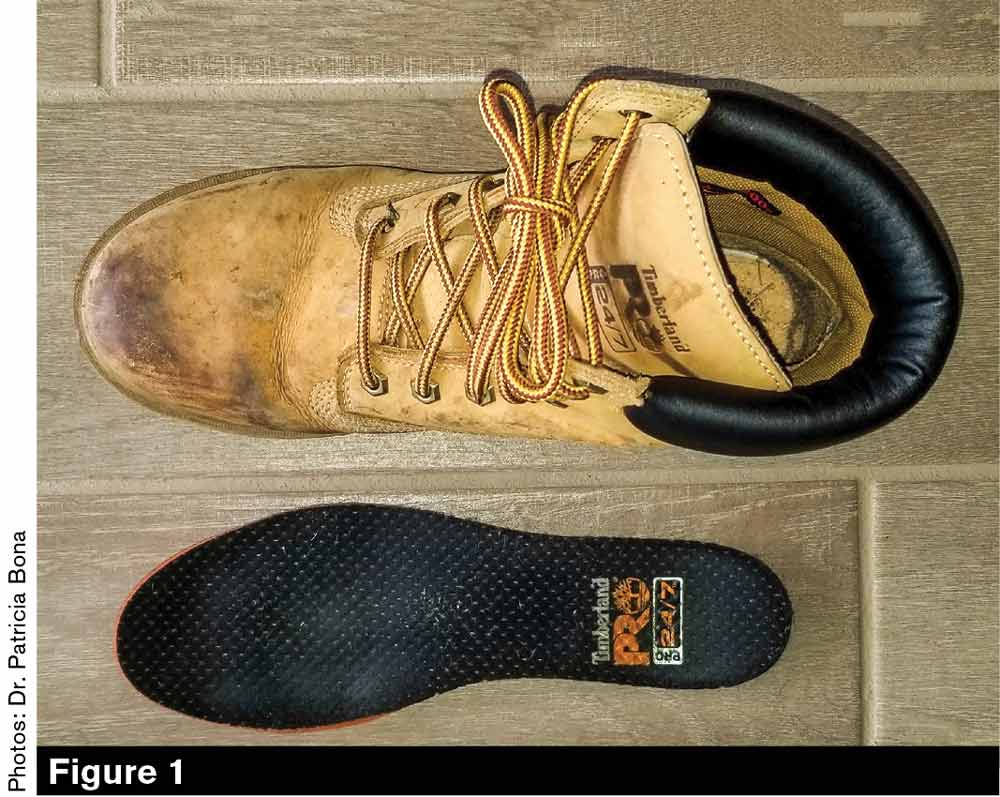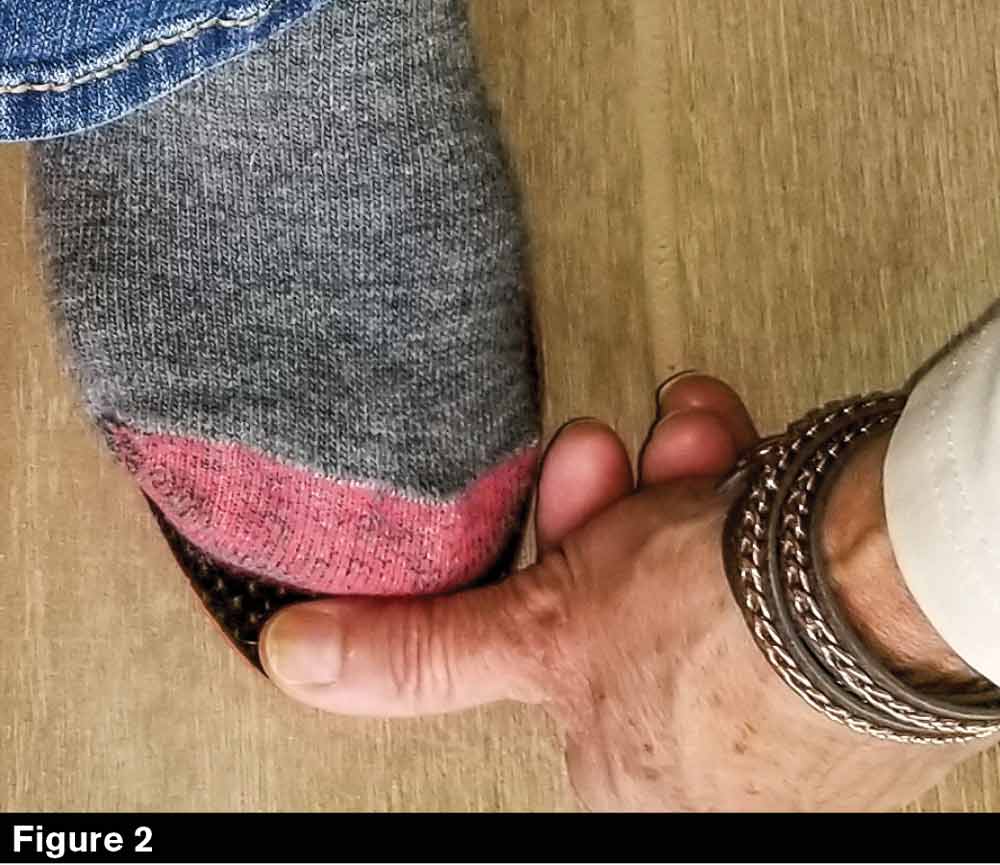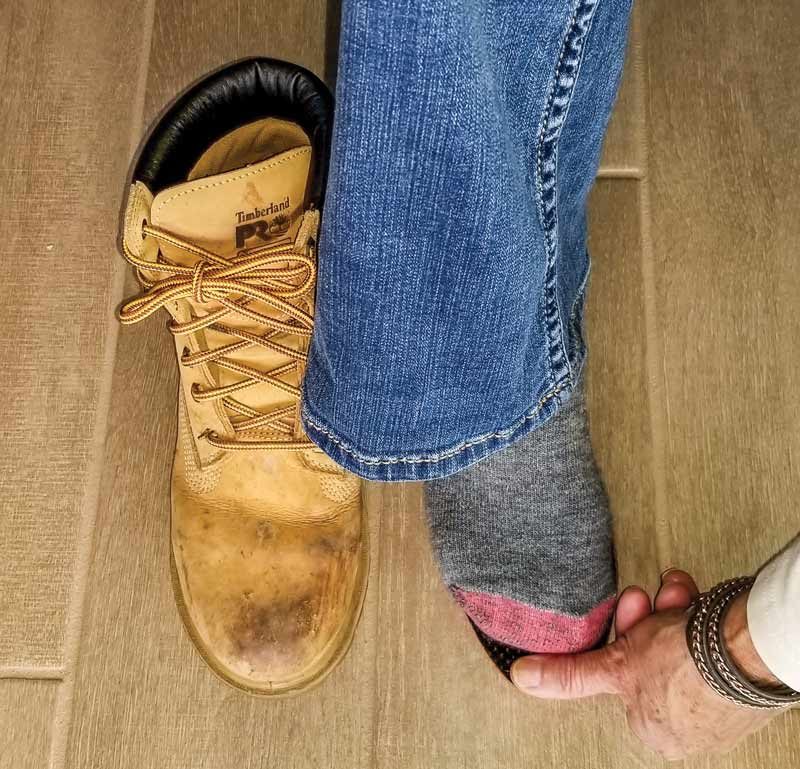Farrier Takeaways
- Approach your own footgear as you would a horse. Decide whether the shape and the balance of the shoe is appropriate for your foot and the work you do.
- When you find a pair of shoes you like, buy multiple pairs so you can have a backup ready if needed.
- Keep your drawer full of quality socks to enhance your comfort and your footwear.
Do you have a favorite pair of shoes? What is it about those shoes that you like? Is it the fit or is it the style that makes you prefer this option over others in your closet? More than likely it comes down to the fit.
Just as in the case of horses’ hooves, conformation of feet can vary greatly in humans. Some people have long toes, others have short toes; some feet are narrow and some are wide. Recognizing conformation is critical when you select shoes or boots. Just as you would no sooner put an aluminum racing plate on a plow horse, the form of your shoe must fit the function of your foot and intended activity.
In previous articles in this series, I explained how wearing ill-fitted shoes can be detrimental to your feet, knees, hips, spine, overall health and career longevity. In this article, I offer some information to consider the next time you shop for shoes.
1. Shop offline if you can. A brick-and-mortar option is ideal when shopping for shoes because it allows you to evaluate your selection for fit, comfort and functionality. Stores with a hunting or outdoor focus are a great place to start. If you order shoes online, you lose the benefit of in-person evaluation. Make sure you know the return and exchange policy for shoes that are bought online because the likelihood is high that they will not properly fit.2. Double up. After you find footgear that fits, consider buying two pairs of the same shoe or in different styles. This way you’ll have a backup in the event one pair becomes wet and needs to dry out and you will not have to scramble.3. Socks are important. When trying on new shoes or boots, be sure to wear the socks that you will wear in them so you can fit them correctly. Rethink your choice in socks as well. Do you need or want a bit of cushion with a thicker sock, or just more cushion on the bottom? Do you need a wicking sock for hot weather or sweaty feet? Keeping your drawer full of quality socks is a good investment. It never hurts to have an extra pair with you on the road, too. Compression socks are an option often chosen by athletes to support their fitness. I wear compression socks when I work in a barn with concrete floors. If I don’t, by mid-day my legs feel heavy and it affects my energy. If you choose to try mild compression socks, be sure that they do not restrict your toes. By mid-day, my socks will slide up my foot and become tight on my toes and need adjusting.
Remove the inner sole from your shoe and stand on it to measure the length and width of the shoe. If your foot does not fit on the inner sole properly, it will not be any better when it is in the shoe.

A thumb’s width of space at the end of your toe inside your shoe will enable your foot to slide forward some and not be restricted or irritate the toe or toenail.
I hope that this information will inspire you to reevaluate your shoe selection to improve your overall health, help restore your foot and lower leg biomechanics and bring a different sense of comfort to your day’s work and play. Optimizing your posture from the ground up is key to thriving and not just surviving.
LEARN MORE
Learn more about foot health by:
- Downloading Dr. Patricia Bona’s shoe shopping checklist and reading the other articles in this series.
- Watching Andreo Spina Intrinsic Foot Exercises for weak and atrophied feet, fallen arches and knee issues.
Access this content by visiting americanfarriers.com/0421









Post a comment
Report Abusive Comment